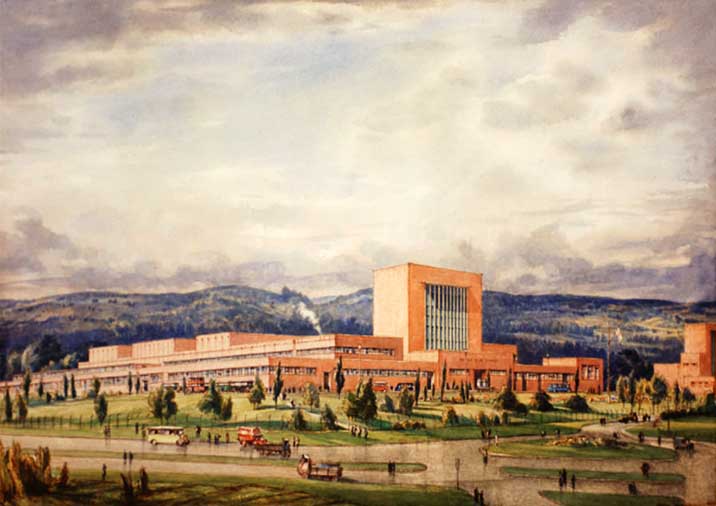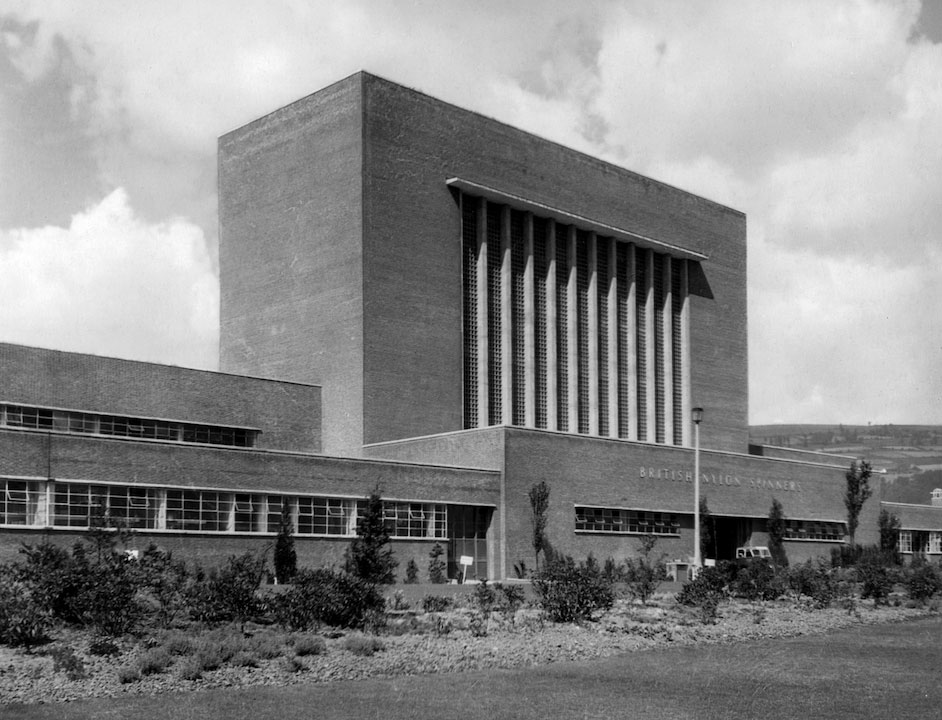ARCHITECTURAL OVERVIEW
The following appraisal discusses the merits of Sir Percy Thomas’s design:
“The factory was built by the architect Sir Percy Thomas in 1948. It is a complex of halls rigorously aligned on an East-West axis and dominated by a rectangular tower. The Tower is undeniably the site’s distinctive characteristic. But the modulated set of halls, built in one single phase, is also inseparable from the tower. The architecture is a wonderful example of the idea expressed by Ludwig Mies van der Rohe that “form follows function”. One can imagine the nylon granules falling from the tower’s hoppers to become extruded threads worked in the adjacent horizontal axis formed by the length of the halls.
Along the south side of the manufacturing halls, a one storey strip is aligned, though, it consists in part, of two floors. In the strip are integrated the “serving spaces” relative to the halls which, themselves, constitute the “served spaces”. Here again, the architect has beautifully translated another postulate of modern architecture enounced by Louis Kahn. Leaving green spaces between the halls and the “serving spaces” (workshops, changing rooms, etc) is a magnificent idea.
In contrast, the constructions to the North of the halls which are additions (some monstrous, like the box in sheet metal) to the original buildings lack any kind of architectural value and, consequently, have to be demolished to emphasise the halls.
The hall’s interior is rigorously organised through a juxtaposition of identical construction modules of roughly 7.60 m by 16.50m. Along the tower’s axis a carpet of 6 modules in width and 36 modules in length is spread covering approximately 30,000 sqm. These modules with a generous reach and well-chosen proportions are ideal for a variety of future uses. One module corresponds exactly to, for instance, an exhibition space, an artist’s workshop, a flat, a double row parking, a double class-room or even an open atrium.
Viewed in cross section and elevation, the set of halls consists of two whole, naturally lit, storeys, raised, in a certain rhythm, to a third windowless floor. The three “humps” thus created constitute in unison with the tower the same dynamism that one finds in Ludwig van Beethoven’s fifth symphony (G, G, G, E-flat). This characteristic has to be kept absolutely in any future development. (...)
The tower, both a functional and a highly identity giving feature, has to be preserved without any external alteration. On the other hand, its interior is admirably well suited for any vertical reorganisation, for instance, the setting up of a theatre stage and cinema screens.
It is indisputable that the whole of the Mamhilad factory constitutes a major witness of the industrial architectural heritage of the twentieth century.” 1 (Paul Bretz)

AERIAL VIEW EAST TO WEST OF BNS / ICI FACTORY AND A4042 NEWPORT ABERGAVENNY ROAD LINK WITH ADMINISTRATION BUILDINGS BEYOND (CIRCA 1960)
AERIAL VIEW


